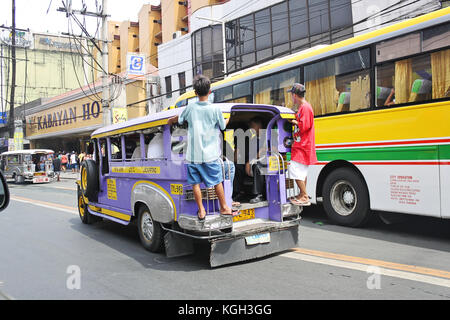Why Select Transit Advertising Philippines for Your Brand
Why Select Transit Advertising Philippines for Your Brand
Blog Article
Exactly How Transportation Advertising Can Change Mass Transit Spaces Into Dynamic Advertising And Marketing Platforms
Transportation advertising and marketing holds considerable capacity to redefine public transport areas right into lively advertising and marketing systems that notify and involve. By making use of innovative styles such as electronic screens and interactive booths, brands can not just get to a varied target market but also improve the total commuter experience. This technique creates a distinct chance for brands to attach with consumers in a setting that is often neglected. As we check out the complex advantages and progressing strategies of transit marketing, it raises the inquiry of how this improvement could redefine our interactions with both brand names and the metropolitan atmosphere.
Benefits of Transit Marketing

Additionally, transportation advertising and marketing is extremely cost-effective contrasted to standard media. It enables advertisers to accomplish high impacts at lower prices, making best use of return on investment. The captive target market of commuters offers an opportunity for brands to convey their messages to individuals that are usually responsive during their travel times.
In addition, the dynamic nature of transit advertising and marketing permits campaigns to be updated often, making certain that messaging stays relevant and timely. This versatility can be essential in reacting to market fads or advertising events, keeping the brand top-of-mind for customers. Finally, the pervasive presence of transportation marketing adds to brand name recall; duplicated direct exposure within acquainted travel contexts enhances brand awareness and cultivates customer loyalty, ultimately driving sales and enhancing brand name online reputation.
Types of Transit Marketing
Public transportation systems give different formats for advertising and marketing, each accommodating various marketing strategies and audience involvement approaches. One popular type is external bus and train wraps, which cover the whole automobile and produce a mobile billboard effect, permitting high exposure in city atmospheres. These wraps can capture focus as they pass through busy roads, reaching a diverse audience.
An additional preferred style is interior advertising, which consists of posters, digital screens, and advertisements on transit seats. These positionings involve passengers throughout their journey, enhancing brand messaging in a confined area. Digital presents, specifically, provide the advantage of dynamic web content, allowing advertisers to upgrade messages in real-time.
Terminal marketing is additionally substantial, featuring posters, banners, and interactive stands within transit stations. These advertisements take advantage of foot website traffic and can target details demographics based on place.
Last but not least, advertising partnerships with transportation authorities can result in unique campaigns, such as themed transit experiences or events, boosting the overall interaction with commuters. Each sort of transit advertising offers distinct advantages, allowing brands to customize their strategy to successfully reach their target market within the general public transport environment.
Engaging Commuters Properly
Travelers are increasingly flooded with advertising messages throughout their day-to-day travels, making it necessary for brands to involve them in innovative ways. To record focus in this crowded space, advertisers should prioritize creative thinking and relevance. Making use of appealing visuals and succinct messaging can substantially enhance the possibility of engagement.
Interactive components, such as QR codes or augmented reality attributes, can additionally change fixed ads into immersive experiences, cultivating a deeper connection with the target market. Brands should concentrate on attending to travelers' demands and passions, customizing messages to reverberate with their way of living, whether via promotions for local businesses or solutions developed to boost their travelling experience.
Furthermore, timing plays a vital role; purposefully putting ads during top commuting hours can maximize presence and effect. Involving travelers efficiently additionally involves leveraging social media combination, allowing travelers to share their promotions or experiences straight from transit platforms, thereby magnifying brand reach.
Fundamentally, efficient interaction depends upon understanding the traveler trip and producing compelling, interactive, and pertinent advertising experiences that not just record interest yet also drive activity and commitment. By doing so, brand names can transform mass transit into a vibrant marketing platform that reverberates with its audience.

Measuring Advertising And Marketing Effect
Exactly how can brands precisely evaluate the performance of their marketing campaign en click to read route environments? Gauging the influence of transportation advertising and marketing requires a complex method that combines qualitative and measurable metrics. One prevalent method is tracking engagement via mobile analytics, where brand names can examine foot traffic patterns and app interactions in the past, throughout, and after projects.
Surveys can supply important understandings into brand recall and consumer view, enabling brand names to gauge just how well their messages reverberate with commuters. Furthermore, monitoring social networks involvement relevant to certain projects can expose changes in public understanding and brand discussion.

Furthermore, teaming up with transit agencies can enhance dimension precision, as they usually have in-depth demographic data on ridership patterns. By integrating these techniques, brand names can create a comprehensive understanding of their advertising effectiveness, ensuring that their campaigns not only reach however also impact their target audiences properly.
Future Trends in Transportation Advertising And Marketing
A substantial change is prepared for in transit advertising as technological advancements and transforming consumer habits reshape the landscape. Transit Advertising Philippines. The combination of interactive media and electronic screens is expected to boost involvement, enabling brands to deliver dynamic content that reverberates with diverse target markets. As public transportation systems embrace smart technology, advertisers will take advantage of real-time data analytics to customize messages based on passenger demographics and actions
Moreover, boosted truth (AR) is positioned to transform the means travelers communicate with ads. By offering immersive experiences, AR can change a mundane trip into an appealing story that captures attention and promotes brand name loyalty. This technology will likely motivate advertisers to produce even more experiential projects that drive customer communication.
Sustainability is an additional important pattern influencing transit advertising and marketing. As ecological awareness grows, brands will progressively look for to straighten with environment-friendly techniques, utilizing lasting materials and promoting green Homepage campaigns within their campaigns.
Final Thought
In final thought, transportation advertising and marketing supplies substantial benefits by enhancing brand name visibility and involving a captive target market. As patterns progress, the capacity for cutting-edge interactions in between travelers and brand names is positioned to grow, ensuring that transportation advertising and marketing remains an essential component of modern-day advertising and marketing approaches.
Transportation advertising holds significant capacity to redefine public transportation rooms into vibrant marketing platforms that inform and involve. The prevalent go to the website presence of transportation marketing adds to brand recall; duplicated direct exposure within acquainted travel contexts strengthens brand name understanding and fosters consumer loyalty, eventually driving sales and boosting brand online reputation.
How can brand names accurately assess the effectiveness of their advertising and marketing campaigns in transportation settings?In final thought, transportation advertising provides significant advantages by boosting brand visibility and involving a captive audience. Transit Advertising Philippines. As trends advance, the possibility for ingenious communications in between brand names and travelers is positioned to expand, ensuring that transportation marketing remains a crucial part of modern advertising and marketing techniques
Report this page